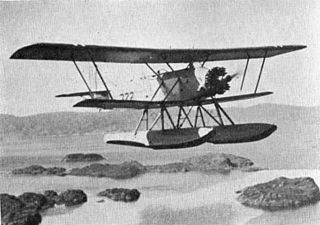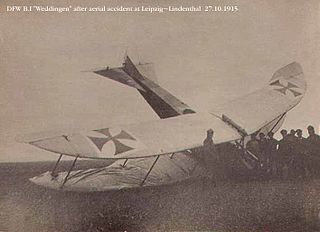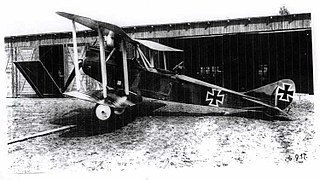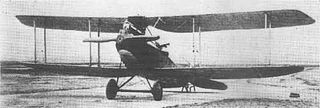
The Arado Ar 196 is a shipboard reconnaissance low-wing monoplane aircraft designed and produced by the German aircraft manufacturer Arado. It was the standard observation floatplane of the Kriegsmarine throughout the Second World War, and was the only German seaplane to serve throughout the conflict.

The Heinkel He 115 was an all-metal twin-engined military seaplane designed and produced by the German aircraft manufacturer Heinkel. Early on its flying history, the He 115 established several new international records for floatplanes.

The Fairey Albacore is a single-engine biplane torpedo bomber designed and produced by the British aircraft manufacturer Fairey Aviation. It was primarily operated by the Royal Navy Fleet Air Arm (FAA) during the Second World War.

The Mitsubishi F1M was a Japanese reconnaissance floatplane of World War II. It was the last biplane type of the Imperial Japanese Navy, with 944 built between 1936 and 1944. The Navy designation was "Type Zero Observation Seaplane" (零式水上観測機).

The Blackburn B-24 Skua was a carrier-based low-wing, two-seater, single-radial engine aircraft by the British aviation company Blackburn Aircraft. It was the first Royal Navy carrier-borne all-metal cantilever monoplane aircraft, as well as the first dive bomber in Fleet Air Arm (FAA) service. The aircraft took its name from the sea bird which 'divebombs' any potential predators that come too close to its nest.

The Supermarine Stranraer is a flying boat designed and built by the British Supermarine Aviation Works company at Woolston, Southampton. It was developed during the 1930s on behalf of its principal operator, the Royal Air Force (RAF). It was the RAF's last and fastest biplane flying boat.

The Etrich Taube, also known by the names of the various later manufacturers who built versions of the type, such as the Rumpler Taube, was a pre-World War I monoplane aircraft. It was the first military aeroplane to be mass-produced in Germany.

The Albatros C.III was a twin-seat general-purpose biplane designed and produced by the German aircraft manufacturer Albatros Flugzeugwerke. It was produced in greater numbers than any other C-type aircraft by Albatros as well as being the company's most-produced twin-seat aircraft.

Hans Fleischer Dons was a Royal Norwegian Navy officer. He is most associated with the first manned flight in Norway.

The Royal Norwegian Navy Air Service was alongside the Norwegian Army Air Service the forerunner to the modern-day Royal Norwegian Air Force.

The Marinens Flyvebaatfabrikk M.F.11 was a three-seat, single-engine biplane used by the Royal Norwegian Navy Air Service for maritime reconnaissance in the decade before the Second World War.

The Rumpler 6B was a German floatplane fighter designed during World War I by Rumpler Flugzeugwerke for the Imperial German Navy's Naval Air Service. The 6B1 was a single-seat version of the Rumpler C.I reconnaissance biplane that entered service in mid-1916. The 6B2 was an improved version based on the Rumpler C.IV; deliveries of the 6B2 began in mid-1917. Small numbers of aircraft were exported to the Austro-Hungarian Empire, the Kingdom of Bulgaria, and Finland; one of the Finnish aircraft participated in the Finnish Civil War. The 6B1s were reasonably successful in combat, able to hold its own against enemy land-based aircraft, but they lacked the advantages offered by the new two-seat floatplane fighters entering service when the 6B2 became available. Most surviving 6Bs became training aircraft during the war. Most of the Rumplers in service with the Central Powers were probably scrapped after the end of the war in November 1918.

The DFW B.I, was one of the earliest German aircraft to see service during World War I, and one of the numerous "B-class" unarmed, two-seat observation biplanes of the German military in 1914, but with a distinctive appearance that differentiated it from contemporaries. Though a biplane, its crescent-planform three-bay wings were inspired by that of the earlier Rumpler Taube monoplane, and led to the DFW aircraft being named the Fliegende Banane by its pilots.

The Bristol Bloodhound was a British two-seat reconnaissance/fighter aircraft designed and built by the Bristol Aeroplane Company as a possible replacement for the Bristol F.2 Fighter for the Royal Air Force. It was unsuccessful, only four prototypes being built.

The Rumpler C.IV was a German single-engine, two-seat reconnaissance biplane. It was a development of C.III with different tail surfaces and using a Mercedes D.IVa engine in place of the C.III's Benz Bz.IV. The Rumpler 6B 2 was a single-seat floatplane fighter variant with a 120 kW (160 hp) Mercedes D.III engine built for the Kaiserliche Marine.

Entering service in 1915, the Rumpler C.I,, two-seater single-engine reconnaissance biplane, was one of the first German C-type aircraft, and also one of the longest serving in its class during World War I, being retired from the last front line units only in early 1918.

The Rumpler B.I was a military reconnaissance aircraft produced in Germany during World War I.

The Rumpler C.VII was a military reconnaissance aircraft built in Germany during World War I. It was developed from the C.IV and optimised for high-altitude missions that would allow it to operate at heights that would render it immune to interception by enemy fighters. Work on the C.VII took place after a similar attempt to develop the C.III into a high-altitude machine as the C.V failed.
The Marinens Flyvebaatfabrikk M.F.2 was a two-seat military biplane floatplane produced by Marinens Flyvebaatfabrikk in 1915 and 1916. It was designed by naval captain Halfdan Gyth Dehli, based on former models by French designer Maurice Farman and improvements by Einar Sem-Jacobsen of the Norwegian Army Air Service's aircraft factory Kjeller Flyfabrikk.
The Marinens Flyvebaatfabrikk M.F.7 was a two-seat biplane floatplane built by the Royal Norwegian Navy Air Service aircraft factory Marinens Flyvebaatfabrikk in 1923. The M.F.7 was designed and employed as a trainer aircraft, and functioned as a temporary solution until a better aircraft was designed. Soon after it entered service, the aircraft factory's experience with the M.F.7 led to the construction of the Marinens Flyvebaatfabrikk M.F.8, which remained in service as the main trainer aircraft of the Royal Norwegian Navy Air Service until the German invasion of Norway in 1940.

















